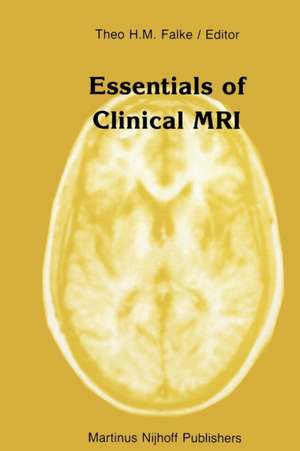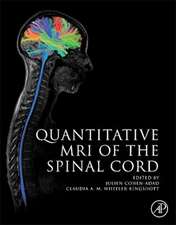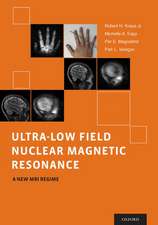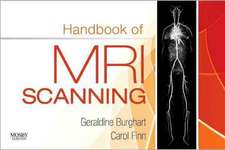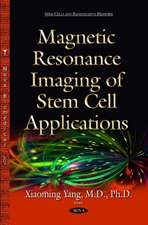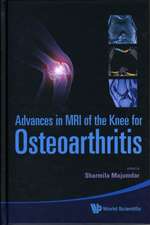Essentials of Clinical MRI: Series in Radiology, cartea 16
Editat de Theo H.M. Falkeen Limba Engleză Paperback – 28 ian 2012
Din seria Series in Radiology
- 5%
 Preț: 437.14 lei
Preț: 437.14 lei - 5%
 Preț: 370.21 lei
Preț: 370.21 lei - 5%
 Preț: 366.19 lei
Preț: 366.19 lei - 5%
 Preț: 348.95 lei
Preț: 348.95 lei -
 Preț: 367.86 lei
Preț: 367.86 lei - 5%
 Preț: 369.45 lei
Preț: 369.45 lei - 5%
 Preț: 363.60 lei
Preț: 363.60 lei - 5%
 Preț: 396.71 lei
Preț: 396.71 lei - 5%
 Preț: 366.19 lei
Preț: 366.19 lei - 5%
 Preț: 340.64 lei
Preț: 340.64 lei - 5%
 Preț: 715.91 lei
Preț: 715.91 lei - 5%
 Preț: 710.06 lei
Preț: 710.06 lei - 5%
 Preț: 367.07 lei
Preț: 367.07 lei - 5%
 Preț: 715.91 lei
Preț: 715.91 lei - 5%
 Preț: 385.94 lei
Preț: 385.94 lei - 5%
 Preț: 1408.43 lei
Preț: 1408.43 lei - 5%
 Preț: 379.69 lei
Preț: 379.69 lei - 5%
 Preț: 670.95 lei
Preț: 670.95 lei - 5%
 Preț: 1416.30 lei
Preț: 1416.30 lei
Preț: 366.19 lei
Preț vechi: 385.47 lei
-5% Nou
70.09€ • 72.89$ • 58.65£
Carte tipărită la comandă
Livrare economică 15-29 martie
Specificații
ISBN-10: 9401079722
Pagini: 248
Ilustrații: 242 p.
Dimensiuni: 155 x 235 x 13 mm
Greutate: 0.35 kg
Ediția:1988
Editura: SPRINGER NETHERLANDS
Colecția Springer
Seria Series in Radiology
Locul publicării:Dordrecht, Netherlands
Public țintă
ResearchCuprins
Section I General principles.- Basic facts and recent developments in MR imaging.- Contrast mechanisms and basic image interpretation in magnetic resonance imaging.- Potential hazards of magnetic resonance imaging.- Section II Neuro imaging.- Magnetic resonance imaging in the central nervous system.- Contrast agents in MRI: clinical applications of Gadolinium-DTPA in the central nervous system.- Suspected disease of the brain - MRI or CT?.- PET and MR imaging of the brain.- Comparative study of MRI versus CT for the diagnostic work up of lesions in the nose and paranasal sinuses.- Clinical relevance of MRI in the diagnosis of diseases of the brain.- MRI of the spine: degenerative disc disease and infection.- MRI of the spinal cord.- MRI in occult spinal dysraphism.- Clinical relevance of MRI in diseases of the spine and cord.- Section III Cardiovascular imaging.- Identification of segmental cardiac anatomy using MR imaging.- Gated MRI versus echocardiography for evaluation of congenital cardiac malformations.- Clinical relevance of MRI in congenital abnormalities of the cardiovascular system.- High speed imaging of the heart.- MRI in acquired heart disease.- MRI of the pulmonary arteries, aorta and vena cava: congenital and acquired abnormalities.- Section IV Abdominal imaging.- Magnetic resonance imaging of the abdomen.- MRI of adrenal disease.- Magnetic resonance imaging of the bladder.- Pediatric MRI.- Section V Musculoskeletal imaging.- Magnetic resonance imaging (MRI) of the musculoskeletal system.- MRI of musculoskeletal disease.- MRI of adult and pediatric joint disease.- Clinical relevance of MRI in the evaluation of muskuloskeletal disease.
Descriere
I am particularly pleased to be able to write the introduction to this book that resulted from a collaborative effort by the Radiology De partment, under the auspices of the Boerhaave Committee for Postgraduate Medical Education of the Faculty of Medicine, at the University of Leiden and the Department of Medical Imaging and Radiological Sciences at Van derbilt University. Magnetic resonance imaging affords the opportunity to interrogate organ and system structure and function in a nondestructive manner without se rious biological implications. Tissue contrast with this modality is ex quisite and inherently superior to that of x-ray computed tomography. The advances to improve signal capture, development of rapid data acquisition techniques, fabrication of more appropriate pulse sequences, and availa bility of contrast agents portend increased versatility and specificity of these studies. Despite the proliferation of numerous general and specialized texts, the developments in MRI occur at such a pace that data in these references are necessarily dated. The technical horizon of MRI is vast with almost li mitless possibilities of signal generation and plan reconstruction. Tissue contrast is so importantly affected by the coupling of signal generation and capture that collective experience of institutions and investigators is extremely important to the initiate and useful even to those indivi duals with the greatest clinical experience.
